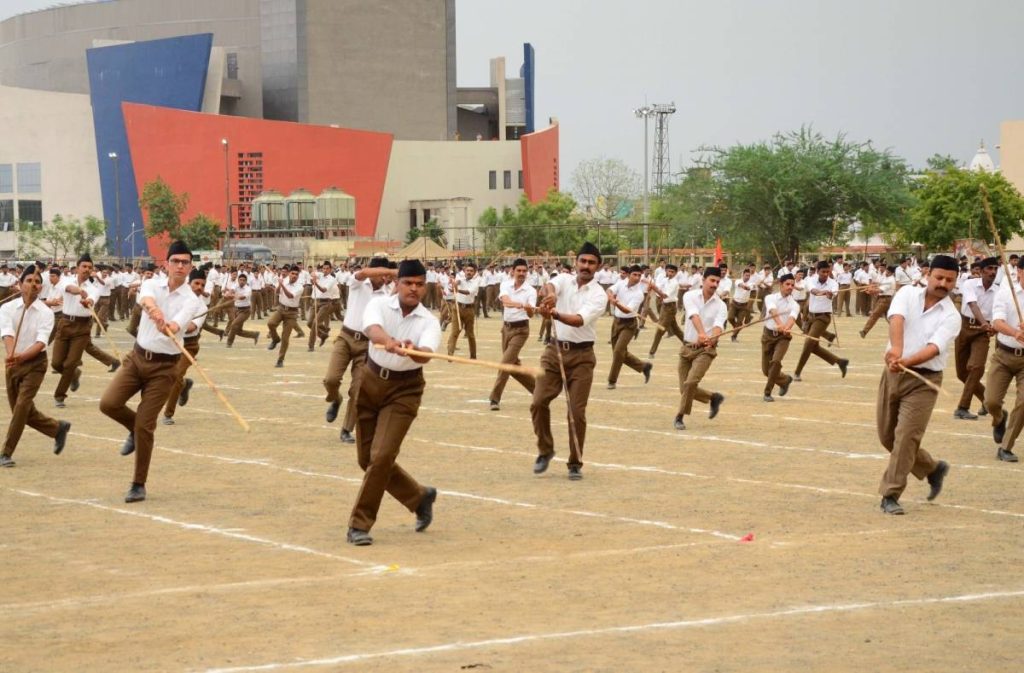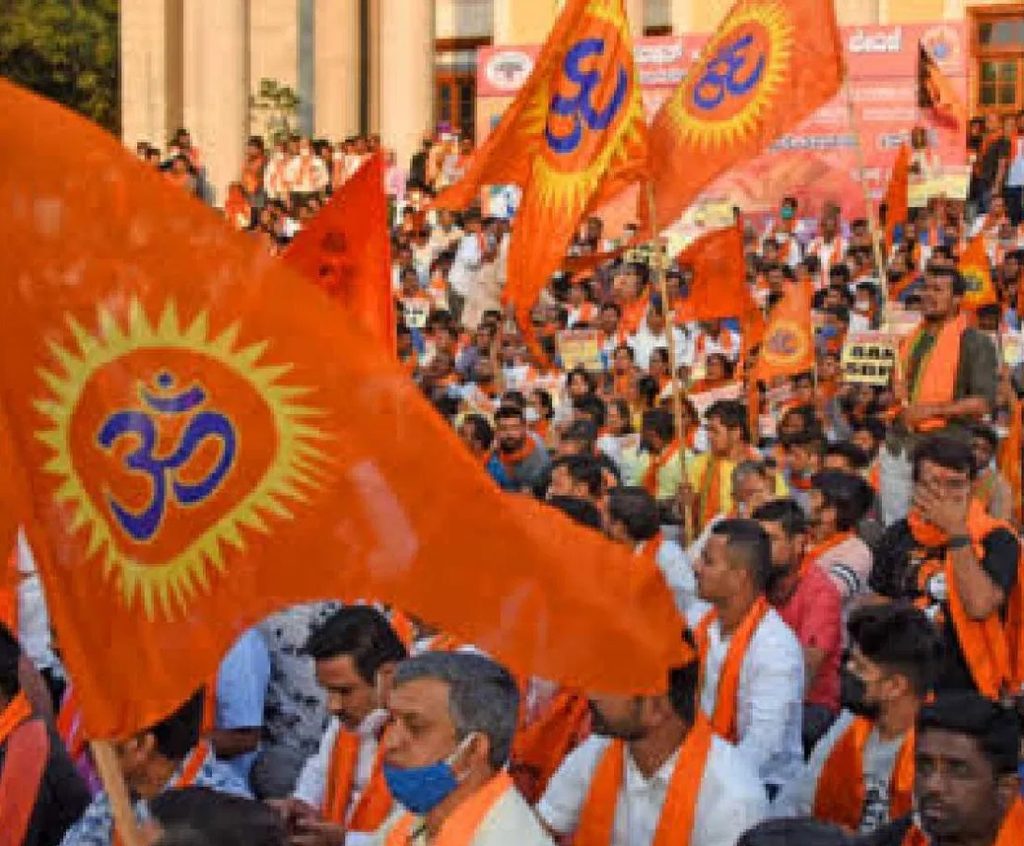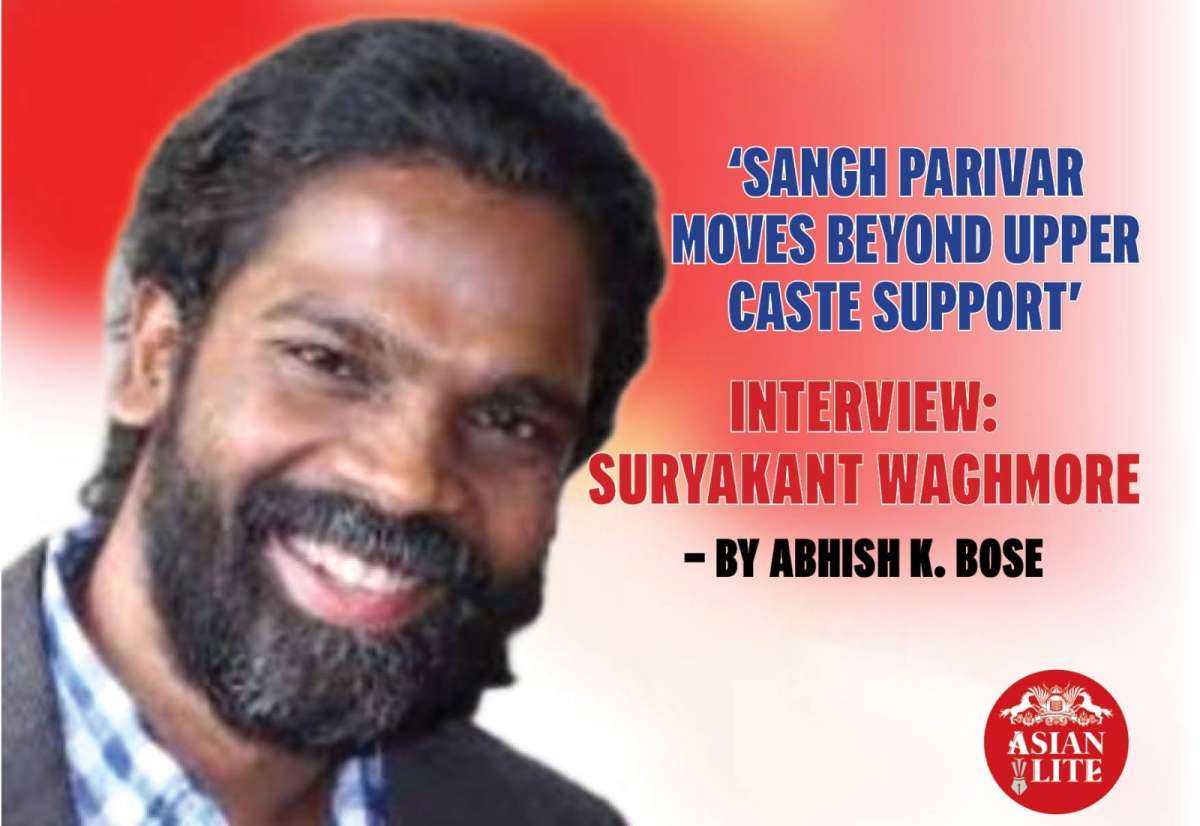In this interview with Abhish K. Bose, Prof. Suryakant Waghmore shares his opinion on various issues such as the dominance of upper caste in political institutions, the undercurrents made by the Mandal Commission’s report in Indian politics among other issues.
Suryakant Waghmore is a professor of Sociology at the Department of Humanities and Social Sciences, IIT-Bombay. He earned his Ph.D. in Sociology as a Commonwealth Scholar from the University of Edinburgh (2011). His areas of research interest broadly revolve around civility and democracy in India. He is the author of Civility against Caste (Sage 2013) and co-editor of Civility in Crisis (Routledge 2020). He was awarded the New India Foundation Fellowship (2022) to work on his book on Caste and Cities (2024). His other forthcoming publications include a co-edited volume Civil Sphere in India (Polity 2024) and second edition of Civility against Caste (Routledge 2024). He was previously professor and chairperson at the Centre for Social Justice and Governance, TISS (Mumbai), and has held visiting faculty positions at Fudan University, University of Hyderabad, Stanford University, and Göttingen University. He regularly writes columns in national newspapers like Indian Express and provides consultancy to NETFLIX on sensitive and compelling representation of marginal groups.
In this interview, Prof. Waghmore shares his opinion on various issues such as the dominance of upper caste in political institutions, the undercurrents made by the Mandal Commission’s report in Indian politics among other issues.
Excerpts from the interview
1. The share of upper caste legislators in all the legislative assemblies and parliament has been declining and that of the lower castes rising. The 1990s saw a doubling of the percentage of OBC MPs – from 11 percent to 22 percent whereas the proportion of upper-caste MPs dropped from 47 percent in 1984 to below 40 in the 1990s. It produced a shift in the balance of political power in governments and legislatures, reshaping the very character of democratic politics. Upper castes are still very influential. Even though upper castes are vastly outnumbered by castes below them but they still hold sway over institutional domains and control the levers of power. Why is this happening?
The politics around Mandal and politicisation of OBCs challenged the dominance of pure castes in North India. Congress as an upper-caste party was decimated and Mandal parties like JDU, RJD and SP made their presence felt with more OBC politicians gaining political power. The antagonism between OBCs and pure castes was however temporal in North India. The limited economic and political mobility of OBCs has attracted more to Hindutva and the discourse of kshatriya-hood of OBCs has helped in status claims. The seduction of Hindutva amongst OBCs is also driven by their proximity to Brahmanism.
Several movements in colonial and post-colonial times like the Arya Samaj and RSS have invested heavily to construct Hindu solidarity and material mobility amongst ‘impure’ castes and this has led to their substantive inclusion in Hindu sociality.
Despite the mandalisation of politics in North India, OBCs are more of politically scattered castes and do not constitute a significant politicised collective and non-brahmin ideological leanings like south-west are still to turn into popular political sentiment. What we have therefore is individual-caste parties or family-centered parties like SP that develop pragmatic political patronage and alliances with other castes and Muslims.

Decades of cadre-based mobilisation of RSS on the other hand has achieved a significant presence of OBCs in RSS and BJP. Leaders like the incumbent CM of Madhya Pradesh, Mohan Yadav and even PM Modi in several ways signify democratisation of Hinduism and making of Hinduism as a civil religion. Such democratisation is paradoxical — OBCs may have political power but their interests have ideologically merged with the sacrificial ethics of Hindutva. We do not need pure castes at the helm anymore as OBCs too can help achieve the radical aspirations of Hindutva.
2. Thirty years after Mandal social justice politics has been dissipated with the rise of the BJP as the dominant pole of Indian politics, the backward caste politics had indeed hindered the march of Hindutva in the 1990s, with Mandal upstaging religious politics which had been catapulted to centre stage by the Ayodhya movement. Turning the politics of social justice on its head, the Hindu right crafted a broad-based identity politics to undercut Mandal which appeared to have outlived its utility for a critical mass of the socially marginalized, bringing the OBC vote to the BJP. Isn’t it a strategic lapse from the part of the Congress in not carrying forward the legacy of the lower caste social justice spearheaded by Mandal which could have stem the growth of the BJP?
Yes, the gains of social justice movement made by Mandal may seem to have been reversed. But the actual opposition to Mandal was from Congress and not Hindutva or BJP. So, Mandal/social justice and Hindutva are not necessarily at odds. There are voices against reservations in RSS but that is a general pure-caste sentiment and not an official position of RSS.
While Mandal movement achieved decimation of Congress in Bihar and UP, Mandal and Mandir are not necessarily antithetical as is imagined by some votaries of Mandal movement and caste census.
Mandal movement was never anti-caste it was merely pro-reservation. As Congress lost ground, BJP mobilised around a broader axis of Hindu solidarity while othering the Muslims. The economic mobility achieved by OBCs under neo-liberal India along with anti-Muslim common sense that has been cultivated for over a century amongst the Shudra castes, came in handy for success of BJP. Congress may claim legacy to Gandhi and Gandhian politics but Gandhi’s religiosity also laid grounds for success of RSS and BJP.
Congress in past two decadesis increasingly wearing a pro-OBC coat, but this strategy does not necessarily have deeper commitment to politics beyond religion and caste. BJP on the other hand is rooted in the politics of Hindutva and other policies of universal welfare along with politics of polarisation help itconsolidate support from above and below.

3. Historically, the Congress was built as a centrist catch-all party, but to remain a catch-all party became very difficult once powerful cleavages based on caste (after Mandal) and religion (related to Ayodhya) has build up, gaining momentum and popular acceptability. This resulted in a major confrontation between the upper and backward castes, displacing the Congress from its position of dominance in north India, most notably in Uttar Pradesh. This had a cascading effect too on the party’s political fortunes in other states. The party never recovered from this transformation of India’s politics which challenged the pluralist foundation of the political system by shifting the discourse towards identity politics. Do you think that without enunciating a strategy to counter the identity politics can Congress win in the elections?
Congress succumbed to Mandal under pressure from Mandal movements. Its centrism had otherwise survived patronage of dominant castes in North India. The marginal castes and communities gained minimally from the Congress structure. What is understood as the pluralist foundations was fragile and something that corroded immensely with the rise of BJP. A major problem with Congress is that it is not a cadre-based party like BJP. Sadly, no party can match the commitment and passion that RSS cadres bring to BJP. There are fewer patronage-based groups withing BJP as compared to other parties. Congress can make scattered gains due to anti-incumbency and other residual factors but BJP is continually strengthening its foundations after every election due to its ideological clarity and nationalist rhetoric.
In Karnataka Congress was successful because of the Ahinda movement of Siddaramaiah and other leaders. There is some anti-caste ideological basis for Ahinda which helps Congress in Karnataka. We hardly see this in other states. In UP, Congress may not succeed if it fails to tie up with BSP. Similarly, in Maharashtra VBA and MIM may affect chances of Congress. BJP has multiple enemies in the civil sphere but they are all splintered groups, sometimes competing within themselves.
Since Congress lacks cadre-based organisation, sacrificial ethics (sewa) and ideological clarity, it has to bank on alliances. All of this makes BJP seem more principled as other parties continue to be largely family-basedentities. If Congress plans to turn into a ‘Bahujan’ party, they will have resort to bahujanist icons, culture and mass mobilisation from below and I do not foresee that possibility.
4. Isn’t the key issue for the Congress is defining its response to Hindu nationalism? While the Congress is largely agreed on the necessity of combating communal ideas, politics and policies, it has swung between making ideological compromises with majoritarian nationalism and plotting a frontal battle against it. Are the contradictory pulls exerted by these divergent approaches are partly responsible for the impasse plaguing the party since its spectacular defeat in 2014. From 2014 onwards, the Congress is wary of an engagement with these big issues mainly because it fears losing popular support by being seen as anti-Hindu; hence, most leaders are unwilling to come out openly against majoritarianism. What is your response?
We are a nation steeped in religiosity – poor and the privileged alike are deeply religiousand Congress despite its claim to secular credentials has had religious and even communal roots. Neither Nehru nor Gandhi was comfortable with antagonising Hindu and Muslim radicals, change has always been a slow process therefore. It is not surprising that Kamal Nath was bowing in front of Baba Bageshwar and Hindutva in Madhya Pradesh as part of Congress campaign against BJP. Similarly, BJP has its roots in Arya Samaj, RSS and even Congress.

Our Constitution too carries these paradoxes — it bans cow slaughter (Article 48) along with providing social justice provisions (Article 340) and scientific temper is part of our fundamental duties (Article 51A). All of this may seem like irony of sorts but these complex power processes also make our democracy a stunteddemocracy that thrives on unreason and incivility.
BJP has trumped Congress at politics of caste and religion. By posing Hinduism as the greatest religion of all times and simultaneously framing Hinduism as a civil religion to mobilise Hindu solidarity beyond caste, BJP evokes a formidable sentiment of Hindu citizenship beyond caste. It is not anti-caste but it is ‘violently’ pro-Hindu and anti-Muslim. The only substantive politics that Congress and its intellectuals are banking on is mobilisation of OBCs against BJP, this is a difficult proposition in North India as BJP has successfully accommodated the Shudra castes in its party structure. A demand for caste census may polarise temporally but not necessarily help in the long run, and the politics of OBC representation needs to find some substantive universal discourse of sacrifice and recognition.
5. The frequent conflation of Hinduism and Hindutva has benefited the ruling party. It’s important to expose this conflation and tell people about the misuse of Hinduism for political purposes. In this line of thinking Hinduism is under attack whenever Hindutva is questioned. Ordinary Hindu need to be told that Hinduism is not under attack. Hindutva and Hinduism are different. Hindutva is a political ideology, while Hinduism is a religion. But political mobilization through this strategy may be difficult. This difference has meaning for the people who are well informed and understand Hindutva politics. It is true that the RSS-BJP take advantage of this confusion but to confront them on this issue won’t be easy. What will be the best possible course corrective measure to help convince the ordinary hindu regarding the differences in between hindutva and Hinduism? Is it an impossible goal?
This is not so simple. At times, Hindutva and Hinduism may seem synonymous to modernising Hindus or worse, Hindutva may seem better than Hinduism. The Shankaracharya of Puri slammed Bhagwat for his criticism of caste and varnashrama dharma and insisted these were a gift of Brahmins to India, something that the West should be taught to emulate. This clash of ideas between the Shankaracharya and Sarsanghchalak of RSS makes fresh to one’s mind the distinction between Hindutva and Hinduism that the known postcolonial scholar AshisNandy had thought of. While Nandy hoped for an end of Hindutva at the hands of Hinduism, the former has not only survived but grown leaps and bounds.
Caste constructs the Hindu habits of heart and they affect the formation of civil religion. A modern and free individual beyond caste is almost impossible and broader civic solidarity based on equality beyond religion and caste hierarchy my seem an anathema in Hinduism. Hindutva can be seen as a reformist movement too very much like Gandhianism and other reform movements. It mobilises religion for public goals and national purpose. Hindutva while constructing Hinduism as a civil religion also consistently re-writes meanings of Hinduism and its rituals, makes it incorporative, inclusive towards impure castes and simultaneously generate Hindu pride (not just caste pride) that is anti-Muslim.
The politics of enumeration in colonial times led to several smaller faiths, sects and cults being framed as part of Hindu religion. BJP has been making productive use of the labour of (majoritarian) Hindu reform movements to give a futuristic shape to Hinduism as a national religion where the majority embodies the nation and margins are meant for non-Hindu minorities. The pure and privileged gain more from politics and policies of Hindutva but the marginal castes too are increasingly drawn into the nationalist Hindu conscience.

6. How is the ideological machinery of the RSS overtly and covertly eliminates Congress ideology from India and Hindutva -ise India apart from changing history and eliminating curriculum ? What are the processes that they underwent so as to realise this?
We do not have enough studies on this and the problem is much larger here as far as education is concerned. Was the curriculum and history syllabus under Congress able to instil scientific temper and progressive public culture amongst Indians? The answer must be largely negative. Education is not seen as a social good and has mostly been viewed as a commodity. The utility of education is to get one economic and social mobility not to create a humane society. Children learn ‘culture’ at home and such culture is deeply rooted in ritual and superstition. In most of the world and India too education does not necessarily reform society, a lot depends on social movements and culture of publics.
We are at a juncture where even most educated argue that Ramayana and Mahabharata are not mythological texts. RSS and Hindutva have made most of our family and political culture, and the very nature and meanings of education in India by mixing religion and education so as to produce ‘cultured’ Hindu citizens who privilege rituals over reason and bigotry over compassion.
7. The RSS and the BJP were fervent adherents of the Varna system till the 1970s. However, they have effected a change in their position on it later. What are the exigencies that compelled RSS – BJP to effect a shift in their stance. Could you explain?
Even Gandhi was a supporter of Varna system. He changed considerably after facing the likes of Ambedkar but such change had limits. RSS and BJP thrive because they have changed and evolved too. Their cadres have worked to build support amongst adivasis and even outcastes. The have systematically cultivated Hindutva amongst Yadavs to counter the rise of regional caste parties like SP and RJD. The religious or social estrangement that shudra castes may have faced within Hinduism is being continually reversed by politics of Hindutva
Historically we see a mix of ideas in RSS, as far as caste and varna is concerned, there were some radicals like Savarkar who hoped that Hindus will become one race beyond caste as they inter-marry. What critics do not see is the labour RSS-BJP have put over last century to accommodate Shudras into the Hindutva fold and several OBCs have climbed the ladder within the party and the organisation. Caste is not a thing of past but RSS and BJP have a way beyond caste and their position has continually evolved to promote Hindu unity over caste separation. The persistent othering of Muslims in everyday life and politics has helped RSS-BJP in forging political unity amongst Hindus beyond caste.
ALSO READ: ‘Criticism on Indian Constitution is Sans Valid Reason’
